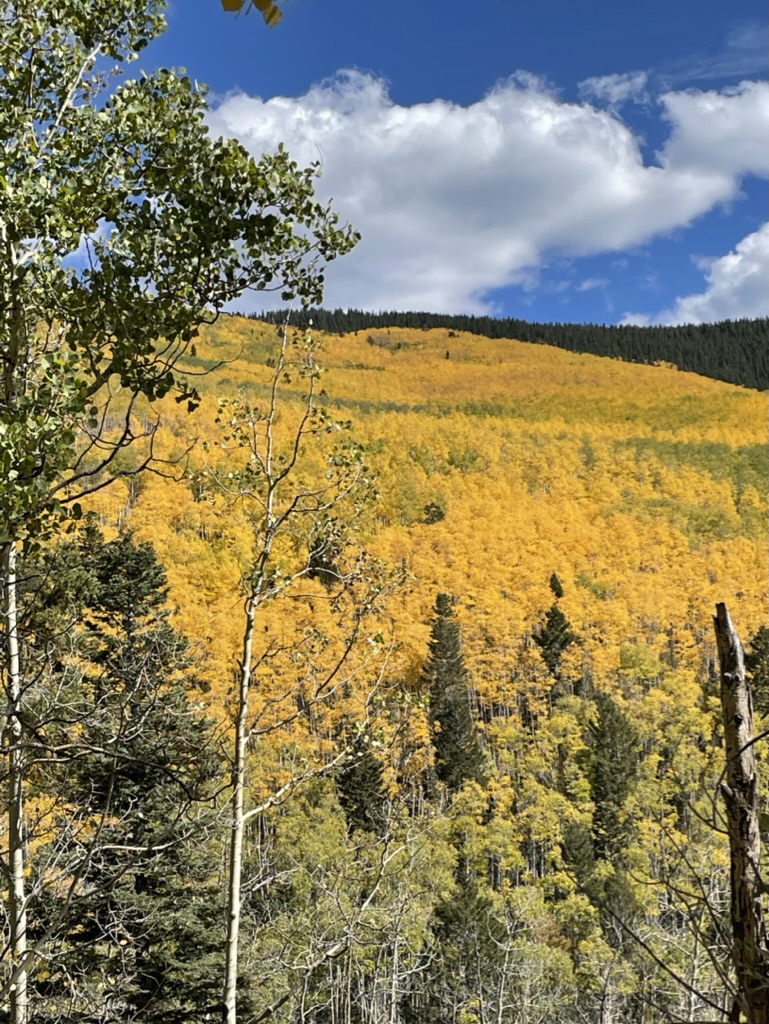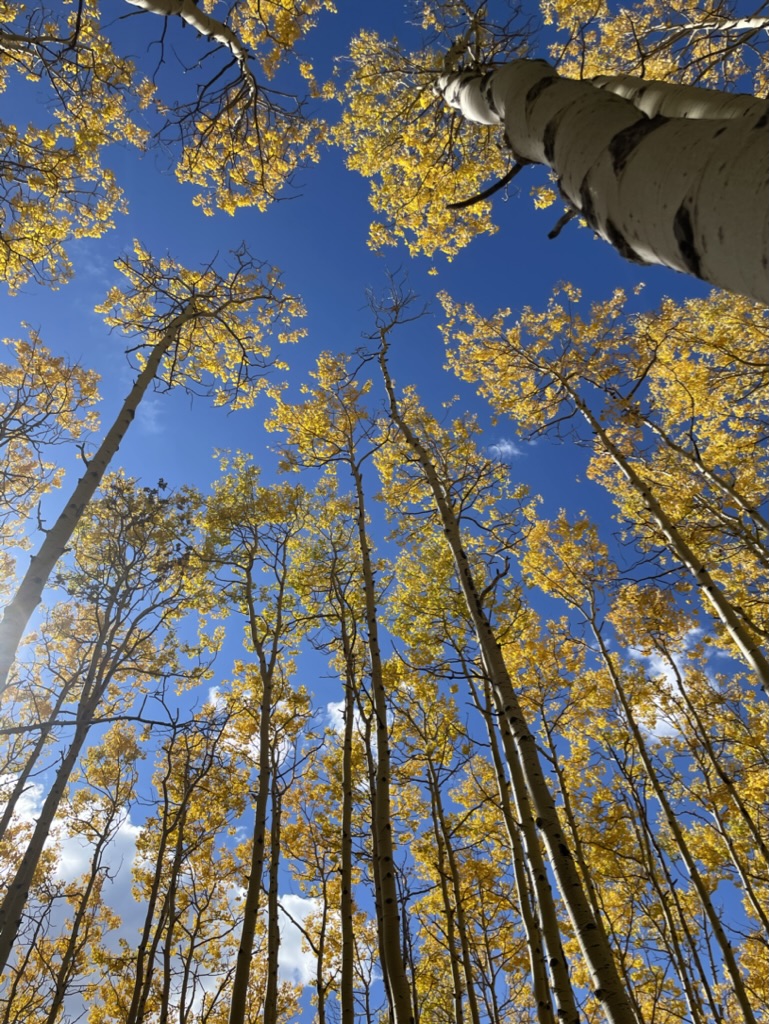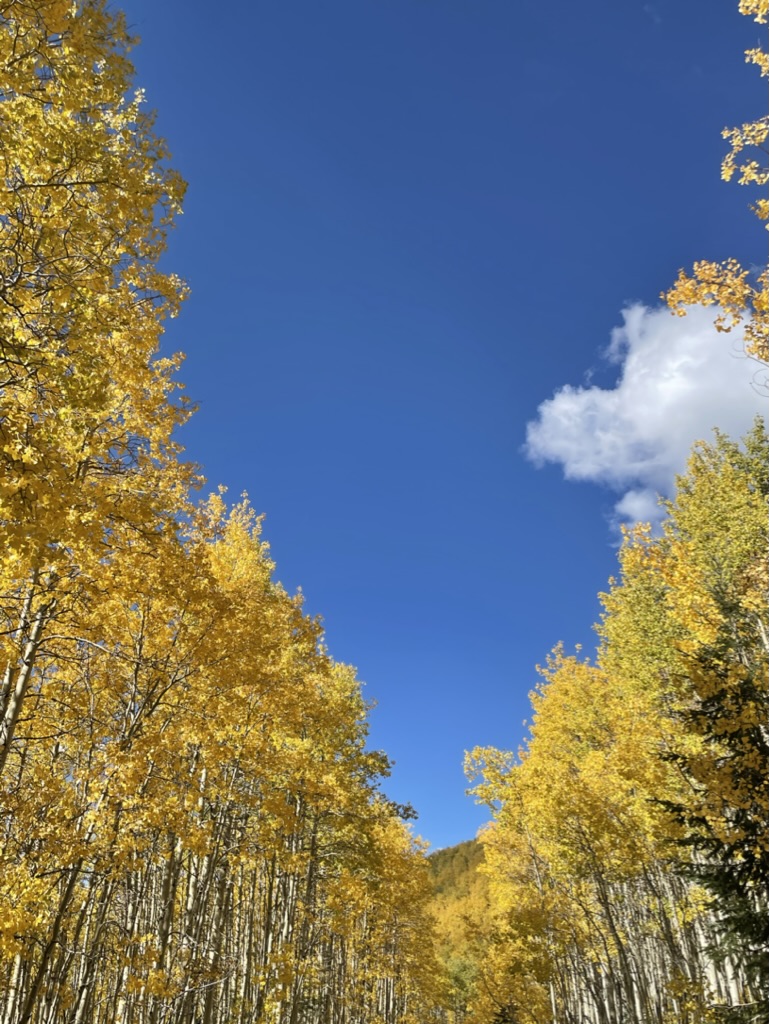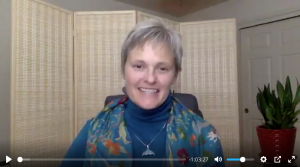
It’s autumn in New Mexico, and that means that the leaves of the aspens in the mountains are turning their brilliant, exuberant gold, drawing throngs of appreciative people in a kind of festive celebration of beauty.
I joined the many “leaf peepers” this week, venturing up to over 10,000 feet of elevation to spend some time immersed in gorgeous color and the presence of the being(s) I have come to call The Aspen People.
When the heartbreak of all that is happening in our world becomes too heavy within me, I often go to those I consider the great ones: those beings whose awareness, consciousness, and wisdom are greater than mine; those who have perspectives and understanding far beyond my limited human perception, those who are some of the great elders, wisdom keepers, and teachers of our planet.
I consider the Aspen to be such great ones. When I am with them, I often have a similar experience of reverence and awe as I do when spending time with whales, dolphins, and elephants. What looks from our “above ground” human viewpoint to be individual trees is actually one organism, connected by long lateral roots.
Each “tree” on the shared aspen root system is genetically identical, and in aggregate, called a clone. Aspen clones can be less than an acre and more than 100 acres in size. There can be one clone in an aspen grove or there can be many. The largest and oldest known aspen clone is Pando, in southern Utah, over 100 acres in size and aged at 80,000 years. “Younger” aspen groves/clones are commonly 5000-10,0000 years old.
These beings have seen so much over the vast expanse of time that they have been here. They hold planetary memory, awareness, and understanding in their cells.
As I walked among the aspen this week, my heart was heavy with horrific news of war, tremendous human suffering, as well as the ongoing, daily news of species loss, habitat destruction, and suffering of so much our more-than-human kin.
I asked the aspen for their perspective, if there was some awareness or understanding they would share with me.
The response was quick, and simple, and profound:
One breath.
One body.
One life.

What would our world be like if we truly understood this, as the aspen do? What harms one of us harms all of us. We are not separate. We have bodies that appear to be separate and individual, but below that, in our roots, at our essence, we are one. Connected, each of us depending on the whole for our breath, our life. What harms one harms all. What nourishes one nourishes all.
We often hear the slogan/idea/teaching: “We are One.” But what does this really mean? How can we live our lives in such a way that we recognize this truth, that we are indeed ONE BREATH, ONE BODY, ONE LIFE? What if this awareness and understanding included not just those of our own species, even those with whom we have vehement disagreements, but also those of all species?

In my interspecies communication classes, I teach a practice where we become one with an animal or other being to experience their thoughts, viewpoints, experiences, and perspectives. It’s often life-changing for people to feel and recognize the awareness, understanding, and consciousness of species other than our own. Though different in body and life experience, the recognition that there is an essence of spirit, soul, and consciousness in all life that we all share is profound.
One breath.
One body.
One life.
Perhaps this teaching from the aspen can be a kind of mantra for us, a guide in these times to remind us of this universal truth.
May there be peace in our hearts, in our lives, in our communities, and in our world.


